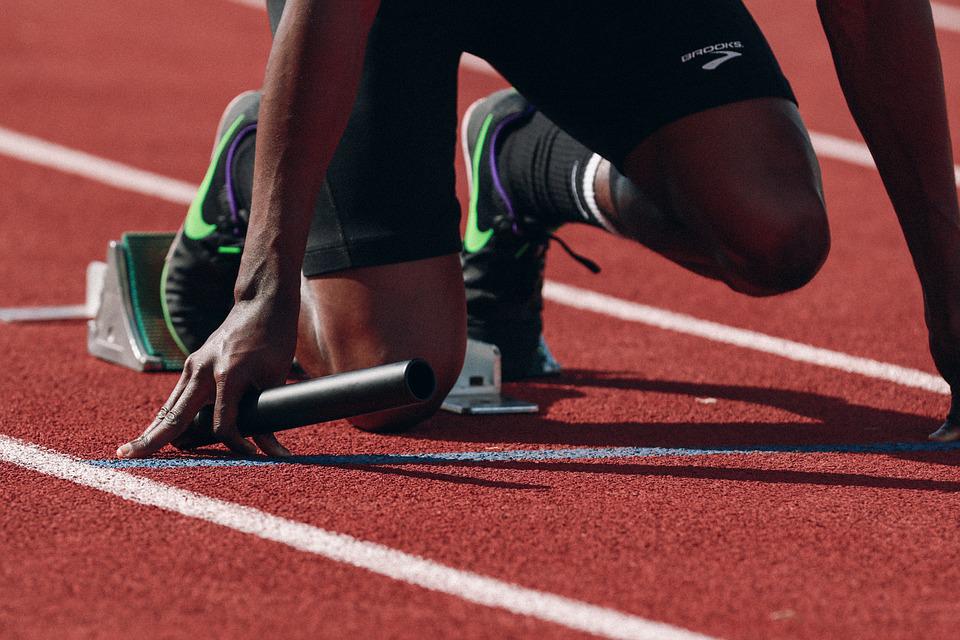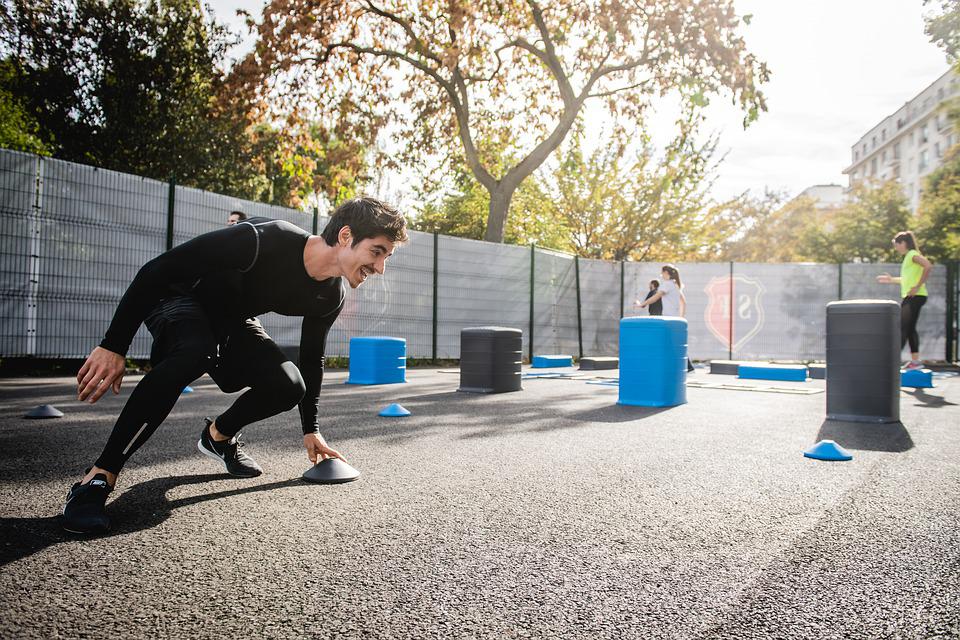
Cycling is a great, low-impact aerobic exercise that has tons of benefits. You can do it at any level of intensity, making it perfect for any fitness level. You can use cycling as transportation, recreation, or even as a competitive sport.
The following text contains information about how cycling can improve your fitness and well-being.
Benefits
- Cycling may help you lose weight
If you cycle regularly, especially at a high intensity, you can help lower your body fat levels and manage your weight.
Other research indicates that adding sprint and strength workouts to regular cycling can raise your metabolism and help build muscle, letting you burn more calories, even when you’re inactive.
There are other factors besides the ones mentioned that affect how often you need to refuel when exercising, such as the types of calories you consume, the quality of your sleep, and how much you enjoy the activity.
If you enjoy cycling, you’ll be burning calories. If you eat a healthy diet that creates a calorie deficit, you should lose weight.
- Cycling improves mental well-being
A study by the YMCA found that people who had an active lifestyle had a well-being score that was 32 percent higher than people who were inactive.
Exercise can definitely improve your mood in many ways. For example, when you exercise, your body releases adrenaline and endorphins, which can lead to a better mood and a sense of confidence. Additionally, if you set goals for yourself and achieve them through exercise, that can also positively impact your mood.
Biking is a great way to reduce stress, anxiety, and depression. Cycling is a great way to reduce stress and improve your mental health by getting exercise and being outdoors. You can ride alone to have time to think, or with a group to socialize.
According to former Hour Record holder Graeme Obree, cycling can help people suffering from depression. Obree himself has suffered from depression throughout much of his life and says that without cycling, he doesn’t know where he would be.
- Cycling will help strengthen your legs
Cycling is a good way to improve your lower body function and strengthen your leg muscles without putting too much stress on your joints. It especially works your quads, glutes, hamstrings, and calves.
The exercise of cycling not only helps to burn fat, but also builds muscle. Muscle is leaner than fat and people with more muscle burn more calories when they are not active.
You won’t develop quads like a track sprinter unless you spend a lot of time squatting, but you will develop a nice toned backside.
Weightlifting exercises, such as squats, leg presses, and lunges, a few times per week can help to make your legs stronger and improve your cycling performance.
- Strengthen your immune system by cycling
This is particularly relevant during the global Covid-19 pandemic.
Dr. David Nieman and his colleagues at Appalachian State University found that people who exercised regularly were less likely to catch colds. The study included 1000 adults aged up to 85.
In other words, by exercising regularly, people can reduce the number of days they are sick by 40% while also receiving other health benefits that come with exercise.
Noakes tells us that light exercise can improve our immune system by increased production of necessary proteins and rousing lazy white blood cells.
The bike is a great choice for commuting because it is faster than public transportation and you don’t have to worry about being around sick people.
There is a downside to intense exercise, however. Your immune system is lowered immediately after intense exercise, such as an interval training session. Adequate recovery, such as eating and sleeping well, can help to reverse this.
- Cycling is good for beginners
To ride a bike, start by sitting on the seat and placing your feet on the pedals. Next, put your right hand on the right handlebar and your left hand on the left handlebar. Then, push down on the right pedal with your right foot and the left pedal with your left foot to start pedaling. As you pedal, keep your body upright and use your core muscles to keep the bike balanced. To turn, simply lean in the direction you want to go. Riding a bike is a fairly simple process. If you have difficulty with a standard bicycle,stationary bikes are a great alternative. To ride a bike, start by sitting on the seat and placing your feet on the pedals. Next, put your right hand on the right handlebar and your left hand on the left handlebar. Then, push down on the right pedal with your right foot and the left pedal with your left foot to start pedaling. As you pedal, keep your body upright and use your core muscles to keep the bike balanced. To turn, simply lean in the direction you want to go.
If you are new to fitness, you can cycle at a low intensity. As you get more fit, you can increase the intensity or continue to cycle at a slow pace.
Even people who are not very active can get health benefits from riding a bicycle, so it can be a good way to start exercising for people who are new to it.
- Cyclists have better lung health
If this point seems contradictory to common sense, you are not alone. But studies have suggested that people who ride a bike are actually exposed to fewer dangerous fumes than those who travel by car.
A study conducted by the Healthy Air Campaign, Kings College London, and Camden Council saw air pollution detectors fitted to a driver, a bus user, a pedestrian, and a cyclist using a busy route through central London.
The driver experienced five times higher pollution levels than the cyclist, as well as three and a half more than the walker and two and a half times more than the bus user. In other words, the cyclist had the lowest pollution levels.
- Cycling may lower cholesterol
Cycling has many benefits for your health, one of which is improving your cholesterol levels. This in turn can improve your cardiovascular health and lower your chances of having a stroke or heart attack.
One review that looked at 300 studies found that indoor cycling has a positive effect on total cholesterol. Indoor cycling may increase levels of HDL (good) cholesterol while reducing levels of LDL (bad) cholesterol and triglycerides.
- Cycling is a low-impact option
Cycling is a low-impact option for people who want an intense workout without stressing their joints.
People who are worried about their joints or who find themselves stiff all over should consider cycling as an activity. It is especially good for the lower body.
- Cycling may reduce the risk of cardiovascular disease
There are many benefits to cycling, including raising your heart rate, improving cardiovascular function, and enhancing your overall fitness level.
A review conducted in 2019 showed that cycling is associated with a lower risk of cardiovascular disease. The same review showed that cycling is also associated with lower mortality rates and lower rates of physiological risk factors such as diabetes, physical inactivity, and high blood pressure.
- Cycling can help people with cancer
If you have or are recovering from cancer, adding cycling to your care plan is a great idea. However, a lot of cancer patients have low energy and feel pain while they’re being treated, so it’s important to talk to your care team and listen to your body before you decide whether or not to exercise.
Cycling can help you stay lean and fit, which may reduce your risk for certain types of cancer, including breast cancer.
If you have breast cancer, staying active may help reduce the side effects of cancer treatment, including fatigue, and improve your overall quality of life, according to research from 2019.
- Cycling saves time
Compare these three experiences:
- Get in the car, sit in traffic, queue to get into the car park, park, pay to park, arrive
- Walk to the bus stop, wait for the bus, complain about the bus being late, get on the bus (pay), watch as it takes you around the houses, arrive, about half a mile from your destination
- Get on the bike, filter past traffic, lock the bike, arrive
Short trips in vehicles are a large contributor to pollution and often involve a lot of time spent stopped and looking at the car in front of you. Save money on gas or public transit by biking instead, and you’ll also save time.
- Cycling improves navigational skills
There’s not much incentive to sharpen your natural sense of direction if you’re using car sat navs or Google maps.
Unless you have a GPS cycling computer that can show maps, then exploring new roads can help improve your sense of direction, so you get better at knowing which way is west.
- Cycling improves your sex life
Many of us are aware that being active is beneficial, but not everyone is aware of the positive impact it has on one’s health. In fact, regular exercise could prolong your life.
Dr. Michael Roizen, who chairs the Wellness Institute at the Cleveland Clinic, says: “On average, a man who has 350 orgasms a year lives about four years longer than a man who has only a quarter of that.” Similar findings were revealed for women.
Does cycling improve your life? According to Dr. Matthew Forsyth, urologist and keen cyclist from Portland, Oregon, it builds some rather essential muscle groups which leads to longer and more athletic intercourse.
Cyclists, who spend a lot of time in skintight lycra showing their bodies, are usually comfortable with their own appearance. This is a good quality for them to have.
- Cycling may help prevent and manage medical conditions
If you want to maintain your health or improve conditions you already have, exercise is essential. One way to avoid a sedentary lifestyle, which can lead to health problems, is to cycle regularly.
Working out on a regular basis can do wonders for your ticker – it can help to prevent stroke, heart attack, and high blood pressure.
Research indicates that regular aerobic exercise such as cycling can help insulin to better control blood sugar levels. Furthermore, people with type 2 diabetes who are physically active have lower blood sugar levels and a reduced risk of heart disease. Regular aerobic exercise like cycling can help one manage and prevent type 2 diabetes, according to research. Exercise helps insulin to better control blood sugar levels. Furthermore, people with type 2 diabetes who are physically active have lower blood sugar levels and a reduced risk of heart disease.
According to very recent research, people with diabetes who regularly cycle have a 24% lower mortality rate, and if they continue cycling for at least 5 years, their mortality rates decrease by 35%.
- Cycling improves balance, posture, and coordination
By stabilizing your body and keeping your bike upright, you can improve your overall balance and coordination, as well as your gait.
As we age, it becomes more difficult to maintain our balance. This is why it’s important to stay active in order to prevent falls. Improving your balance has many benefits, including reducing your risk of falling.
- Cyclists sleep better
It is not surprising that being exhausted from biking would improve sleep, but now it has been proven. Researchers at the University of Georgia studied men and women aged 20 to 85 over a period of 35 years and found that a drop in fitness of 2 percent for men and 4 percent for women resulted in sleep problems.
According to Dr. Rodney Dishman, people generally experience the biggest decline in cardiorespiratory fitness between the ages of 40 and 60. This is also when sleep problems, such as difficulty falling asleep or staying asleep, become more common.
The scientists suggested that the link between sleep and exercise could be caused by a reduction in anxiety brought about by exercise. They also said that exercise protects against weight gain with age, which is another cause of sleep dysfunction.
- Cycling improves spacial awareness
Cycling raises your heart rate and gets you breathless. However, on Zwift, there are additional technical elements such as climbing, descending, and cornering. These elements teach you how to use your body weight to get the bike to go where you want it to.
If you learn how to handle the technical aspects of something, you will feel much more confident, especially when you start to get better at it. You may also find that your ability to do other things, like dealing with a broken shopping cart, improves as well.
- Cycling can offer a positive start to your morning
Starting your day with a healthy activity such as biking not only wakes you up by improving your circulation, but also allows you to begin your day feeling a sense of accomplishment.
The more the day goes on, the more you may feel like making healthy, positive choices.
A morning ride at a low intensity while fasting may help burn fat, improve your endurance, and give you more energy and a higher metabolism for the whole day.
The one downside to this? The research seems to only apply to people who bike casually, and not to athletes who train regularly.
Cycling drawbacks and safety
There are a few things to consider that might make cycling less desirable. These mainly have to do with outdoor cycling, which involves factors you can’t control.
The disadvantage of riding a bike is the risk of an accident. According to the U.S. Department of Transportation, there were 726 bike-related deaths and 50,000 injuries in 2014.
When you can, try to ride in lanes that are just for cyclists, or on streets that are in residential areas.
Some research has found that cycle tracks and streets near them have fewer collisions between cyclists and vehicles.
Traffic laws should always be followed. Intersections and busy areas should be navigated with caution, even if you have the right of way. A quality helmet, as well as any other necessary protective gear, should be purchased.
Make sure your clothes won’t get caught in your bike’s chains by avoiding loose items. You can cycle at night or in the early morning by using bike lights and reflective gear.
If you bike-commute a long way to work, consider bringing a change of clothes with you to freshen up.
Bad weather can be a problem. On days when you can’t cycle outside, you can ride a stationary bike or do something else.
If you use a bike for transportation, buy gear for riding in rain and cold weather, and have another way to get around when it’s not safe to bike.
For long daytime rides, it is important to put sunscreen on all exposed skin and to reapply every 2 hours, especially if you are sweating. Wear sunglasses that protect against UV rays and a hat to further protect your skin. You may also want to invest in clothing that protects against UV rays.
Air pollution is a concern for city cyclists. Choose to cycle on days with better air quality and avoid congested roads.














